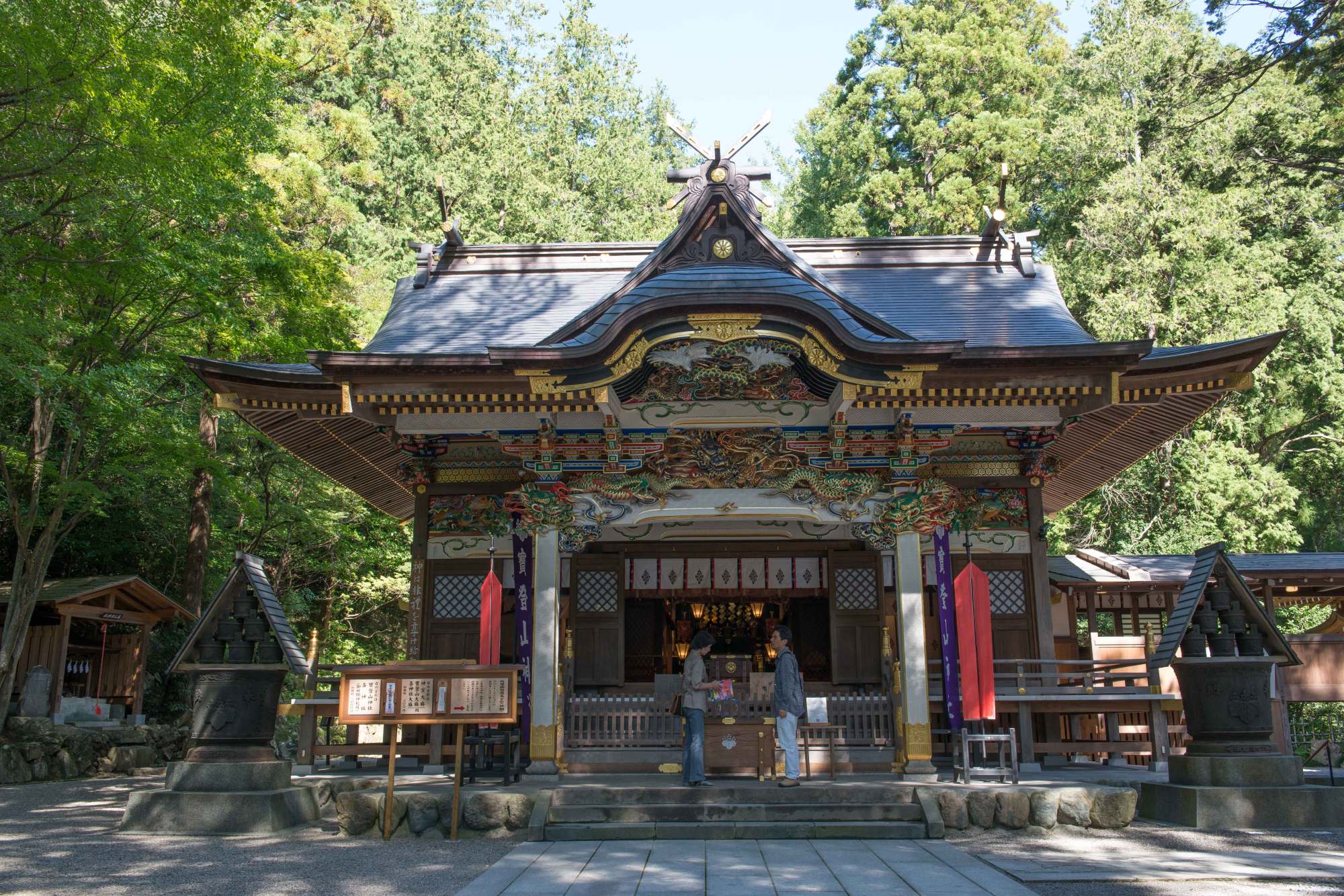It wasn't immediately clear what the man tossing large pebbles at the torii of a shrine was trying to achieve.
What appeared to be the desecration of a religious structure, with the vocal encouragement of his wife, turned out to be related to superstition, the act not of a vandal but a supplicant. When one of the stones landed on the cross-beam of the gate, remaining there alongside a number of others, whoops of satisfaction rang out and the couple clapped their hands and bowed in the direction of the shrine. Anyone it seems, who manages to place a stone in this manner will secure good fortune. If you reflect on it, Shinto as a religion is highly participatory, with a number of activities related to providence.
Should you come to Hodosan Shrine in northern Saitama Prefecture during the cherry blossom season, you will find the broad uphill road leading to its entrance lined with flowering trees. Most walk, but a few visitors board horse-drawn carriages to cover the 800-meter-long approach to the shrine, an interesting alternative to the costly rickshaw rides that have become a staple of tourism in Japan. The South Cherry Blossom Tunnel, as it is known, extends for 3 kilometers north and south of Nagatoro Station on the Chichibu Line. During the scorching days of summer when I visited, the trees provided welcome shade.



















With your current subscription plan you can comment on stories. However, before writing your first comment, please create a display name in the Profile section of your subscriber account page.